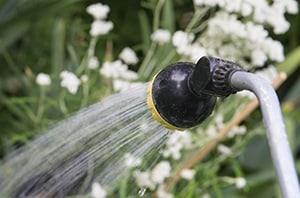By Nadie VanZandt, UVM extension master gardener
If your kale plants succumbed to cabbage worms, don’t fret. You can start a second planting in midsummer to enjoy a bountiful harvest in the fall.
Kale is a good choice for succession planting because it thrives in cool weather, tolerates frost and matures quickly (40-65 days). This also applies to other plants with the same attributes such as collard greens, Swiss chard and leaf lettuce.
Before you begin, check the average frost date for your U.S. Department of Agriculture hardiness zone (https://planthardiness.ars. usda.gov). Depending on where you live in Vermont, it varies from anytime between early September and late October. Using this information, you can compute an appropriate planting schedule.
After the summer solstice, the days get shorter and the air gets cooler. This causes plants to grow more slowly than in the spring. For this reason, it is important to include a couple of extra weeks to the “days to maturity” listed on your seed packet to determine a suitable planting date.
To find your midsummer planting date, add 14 days to the days of maturity, and use this sum to count back from the average frost date.
As usual, remember to choose disease-resistant varieties. If you have kale seeds left over from spring, use them.
Otherwise, this is a great time to try a new variety, such as red Russian kale (Brassica napus var. pabularia ‘Red Russian’) with light blue-green leaves and purple stems. With 50 days to maturity, this colorful variety is a good choice for direct seeding in midsummer and makes a stunning addition to any vegetable plot.
To prepare your planting area, begin by pulling the early-season plants that have bolted or look tired. Weed the area and remove the roots from the previous crops. Next, add some compost to replenish the nutrients and turn over the soil.
Direct seed kale in a space previously occupied by a different vegetable plant. This practice of crop rotation helps balance soil nutrients and avoids propagating plant-specific diseases.
Once your seeds are in the ground, protect your seedlings from the sun. Add a layer of mulch, and keep the soil moist. If possible, use a shade cloth to keep the soil cool or take advantage of tall vegetables nearby to provide natural shade.
A shade cloth that completely covers your seedlings also can stop white butterflies from laying eggs on your plants. Later, this will prevent an infestation of cabbage worms.
During the cool days of autumn when other plants begin to slow down, kale continues to grow and develop a sweeter taste. You also may find that you will reap a better harvest in the fall since most insect pests do not survive cold temperatures.




